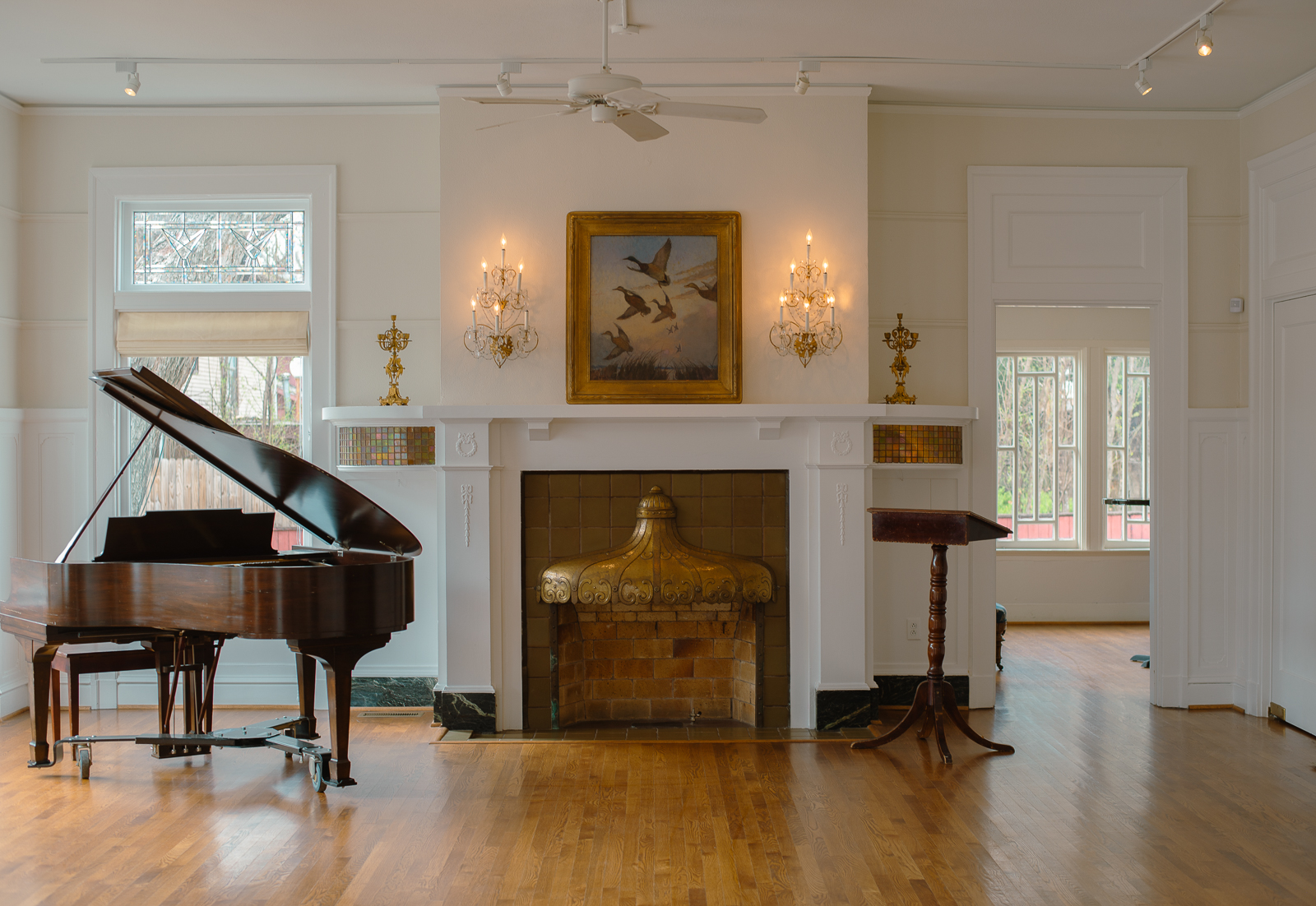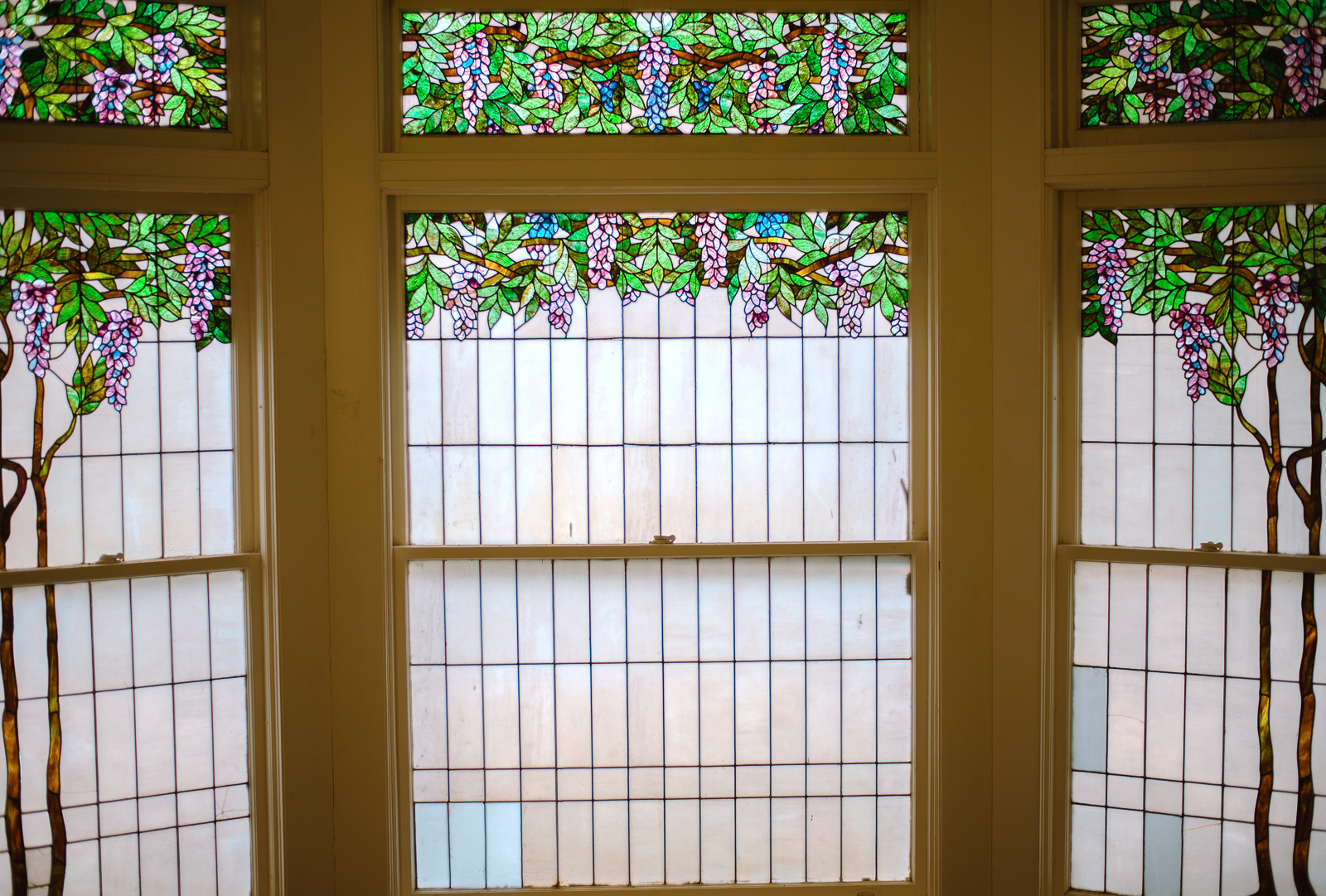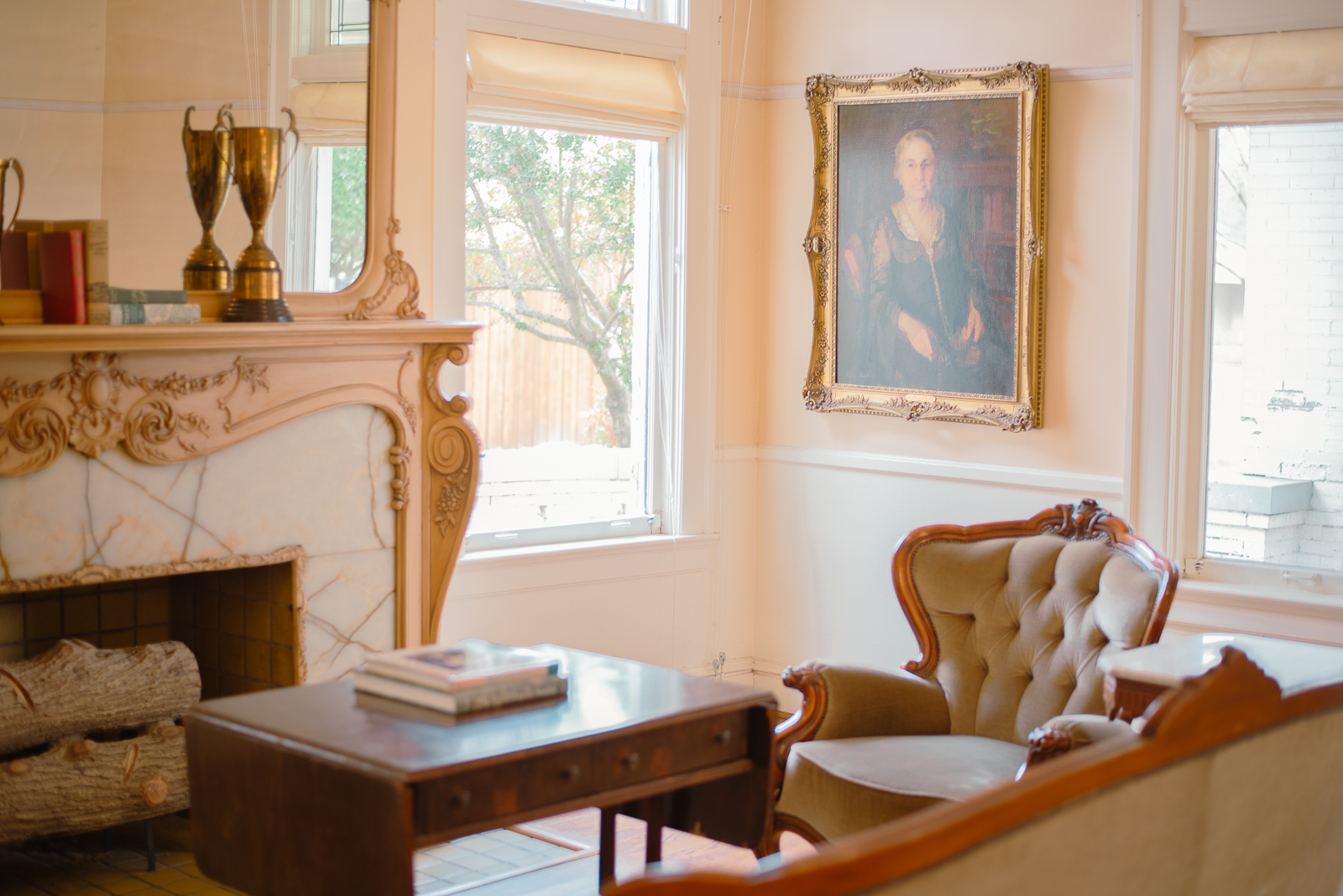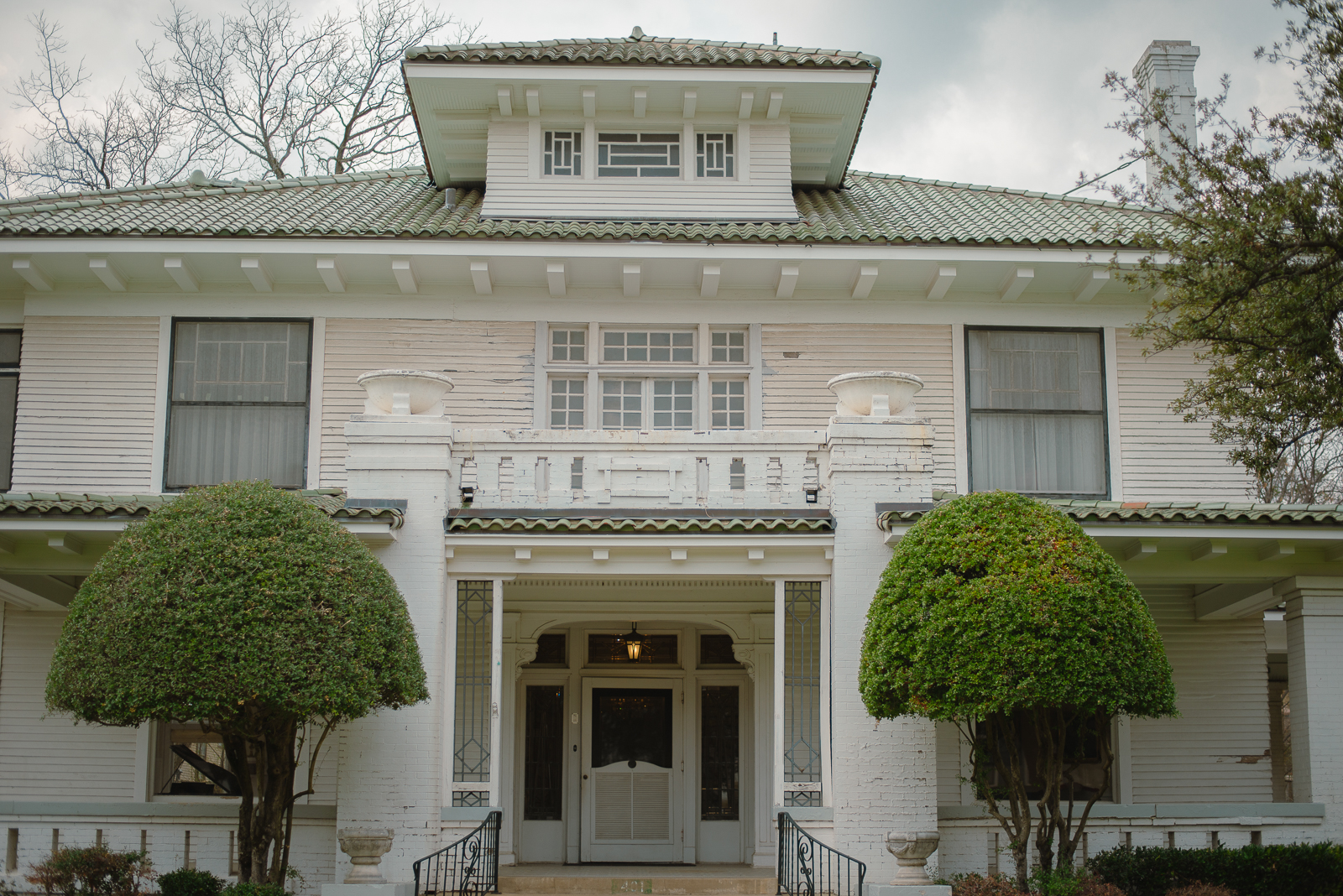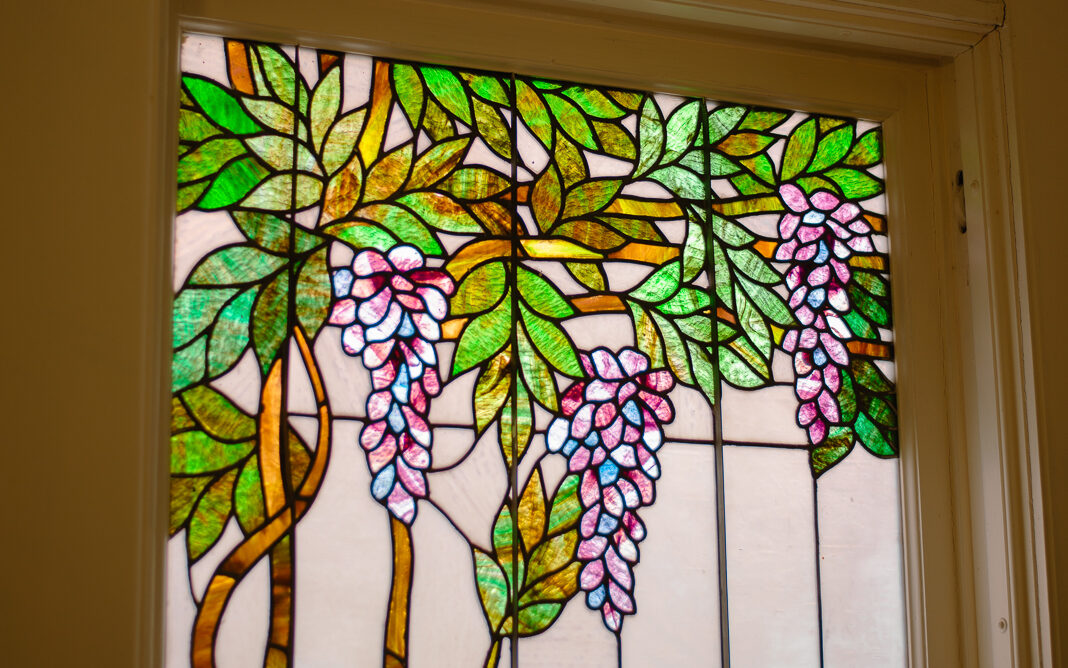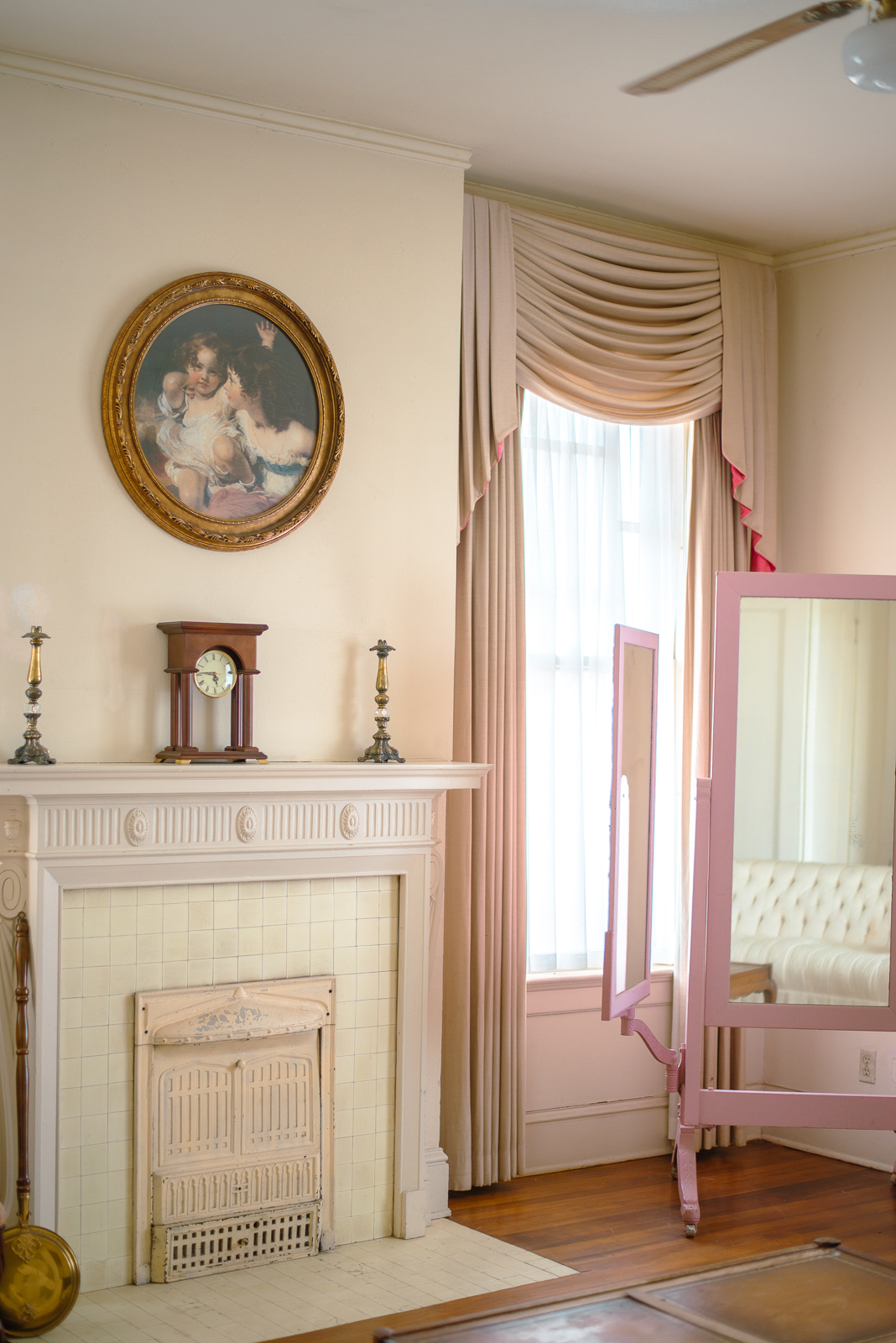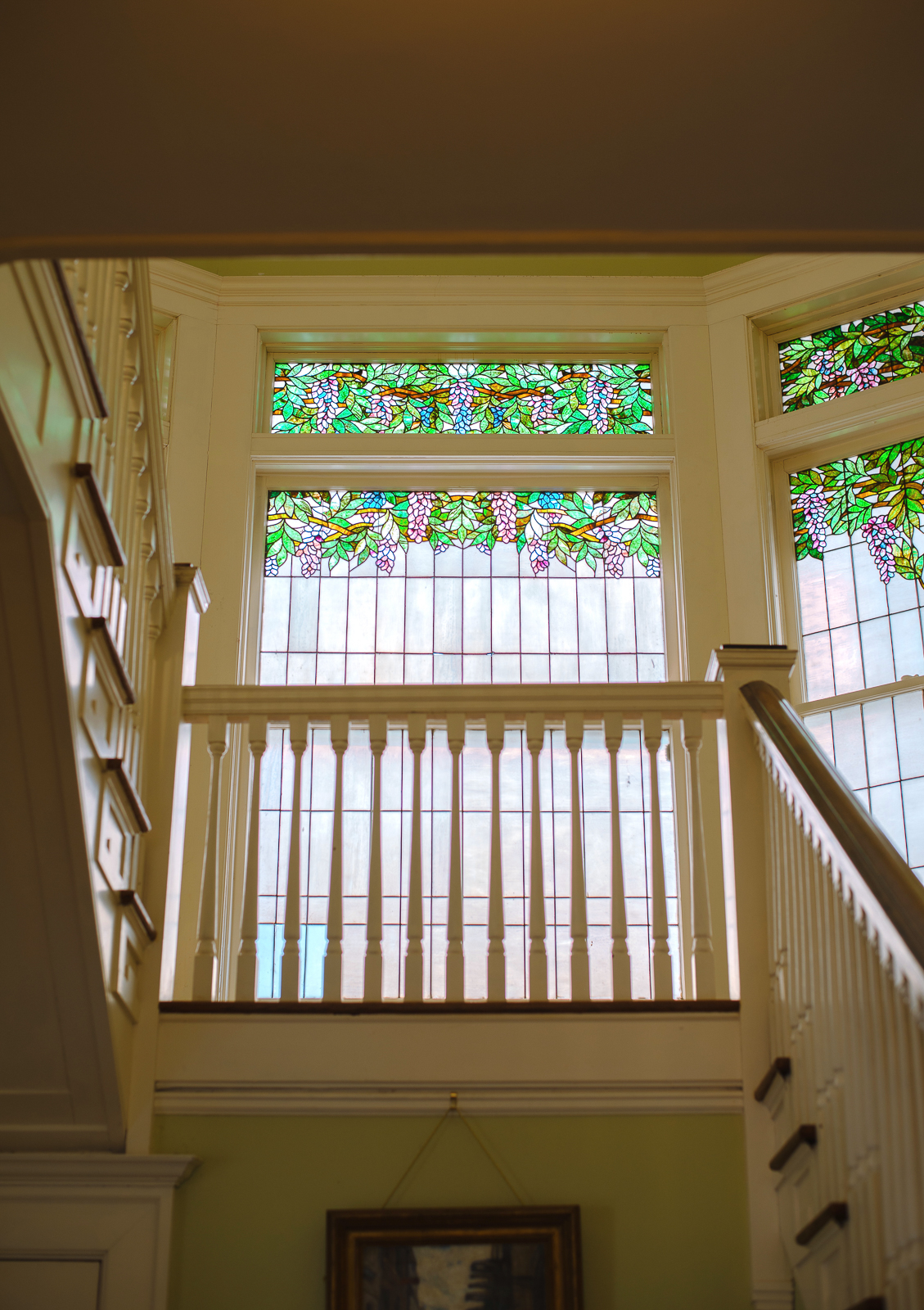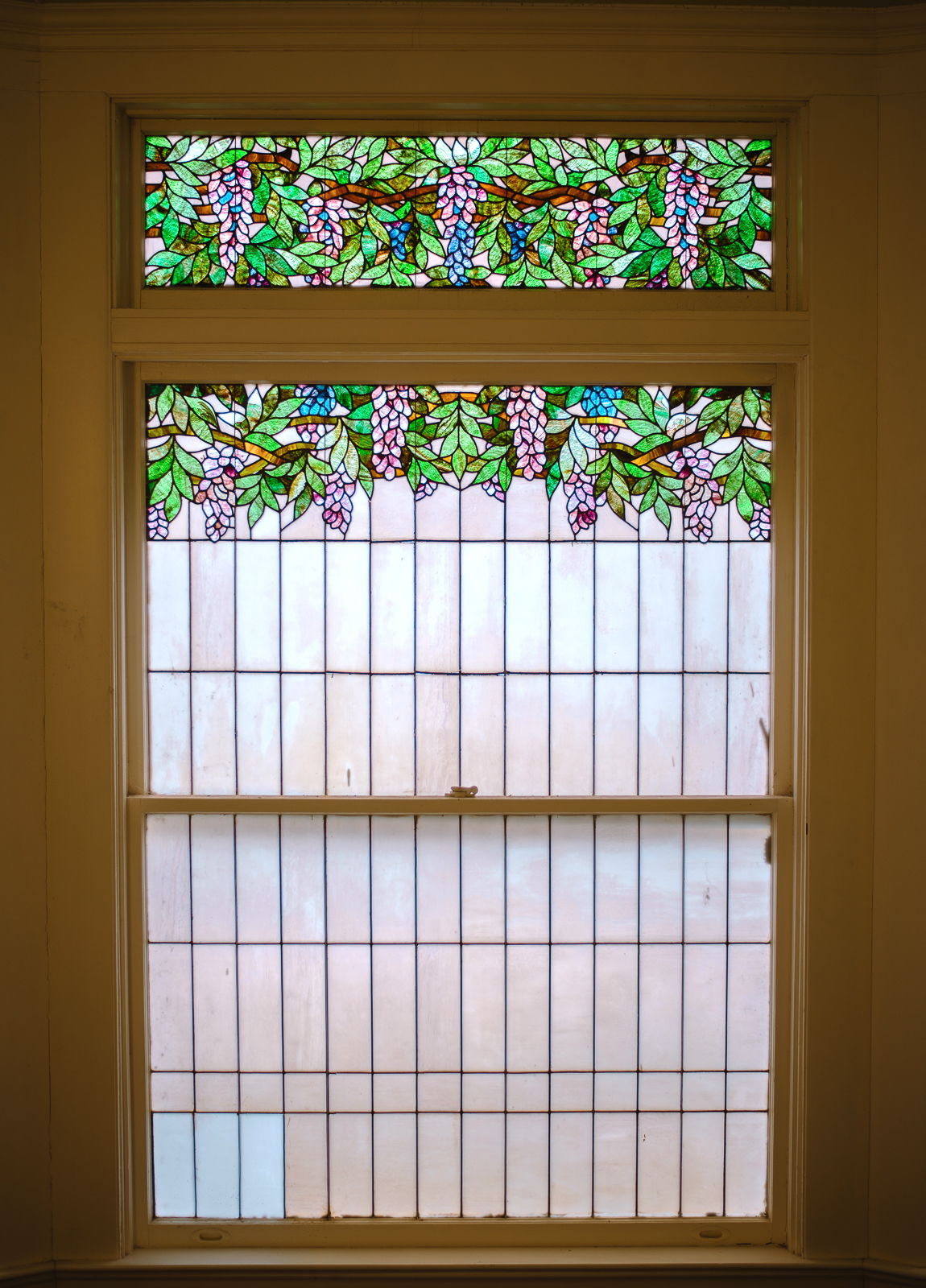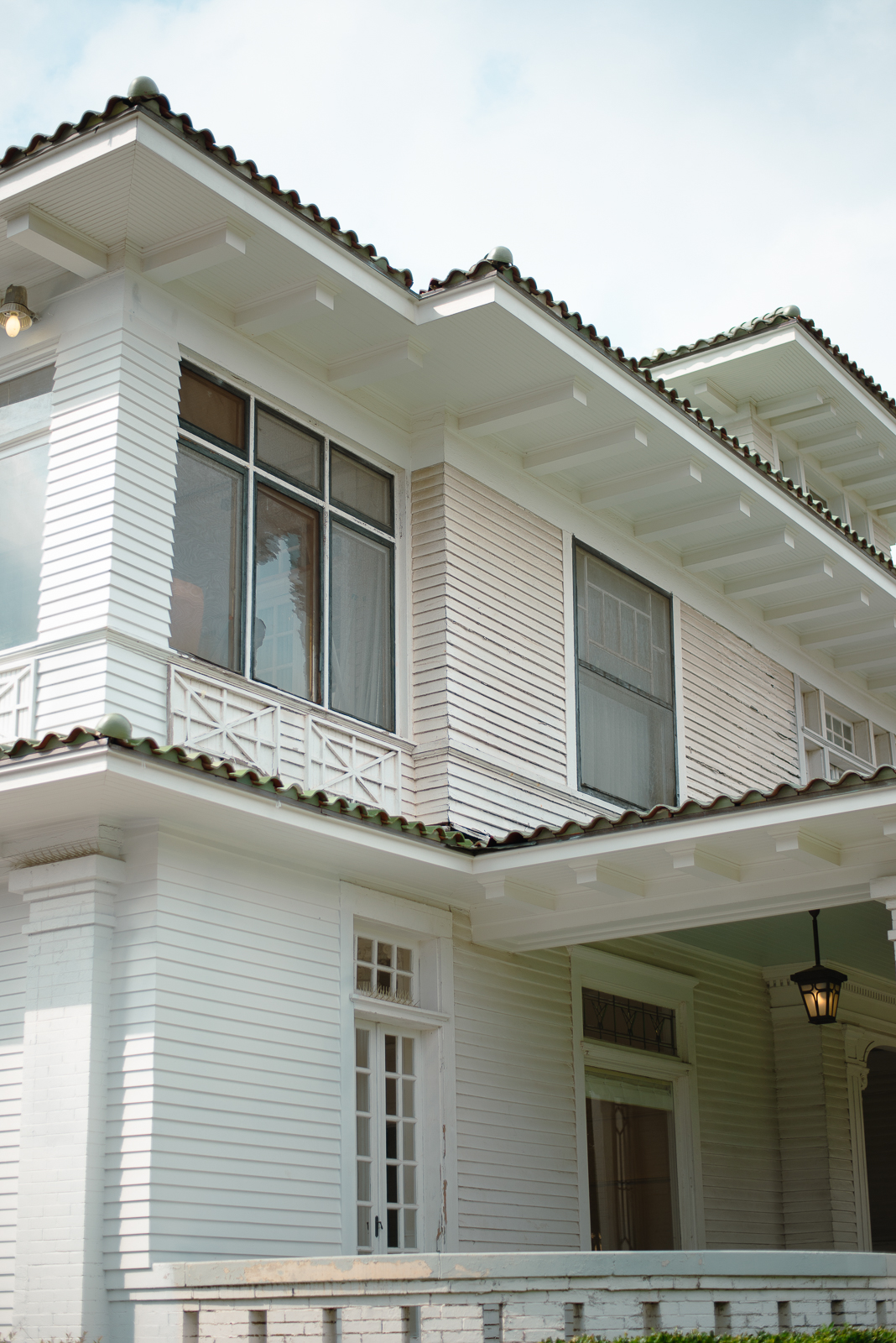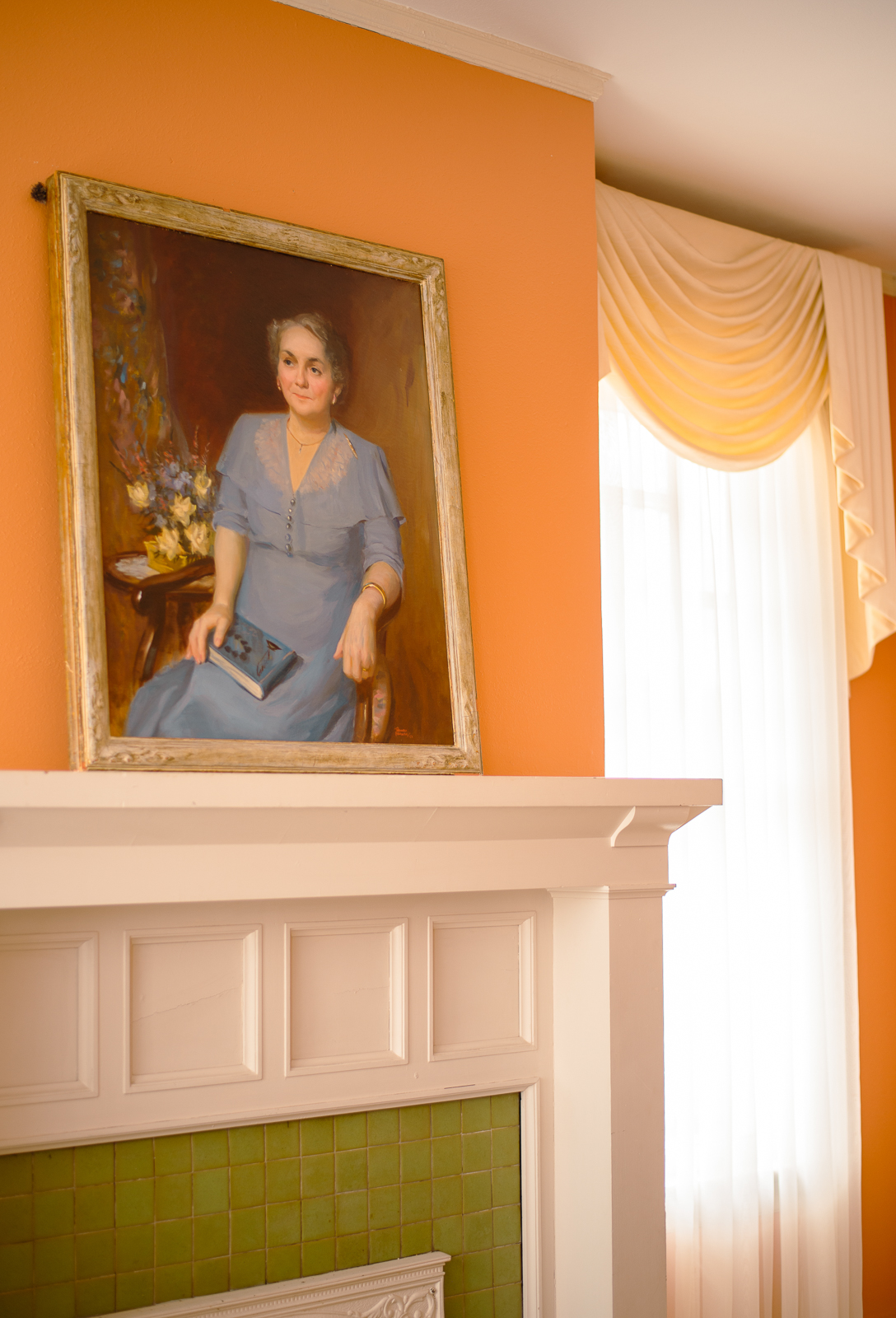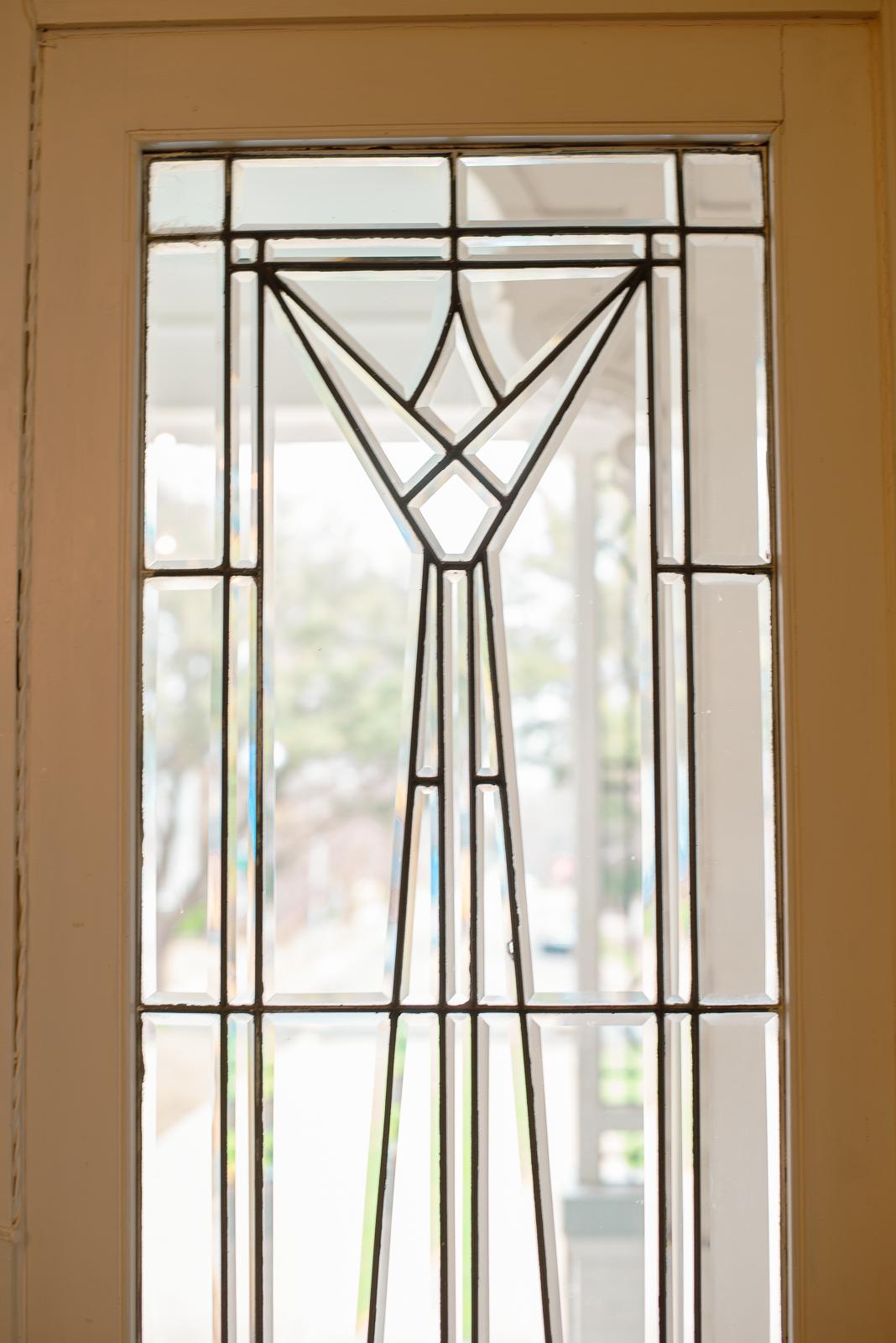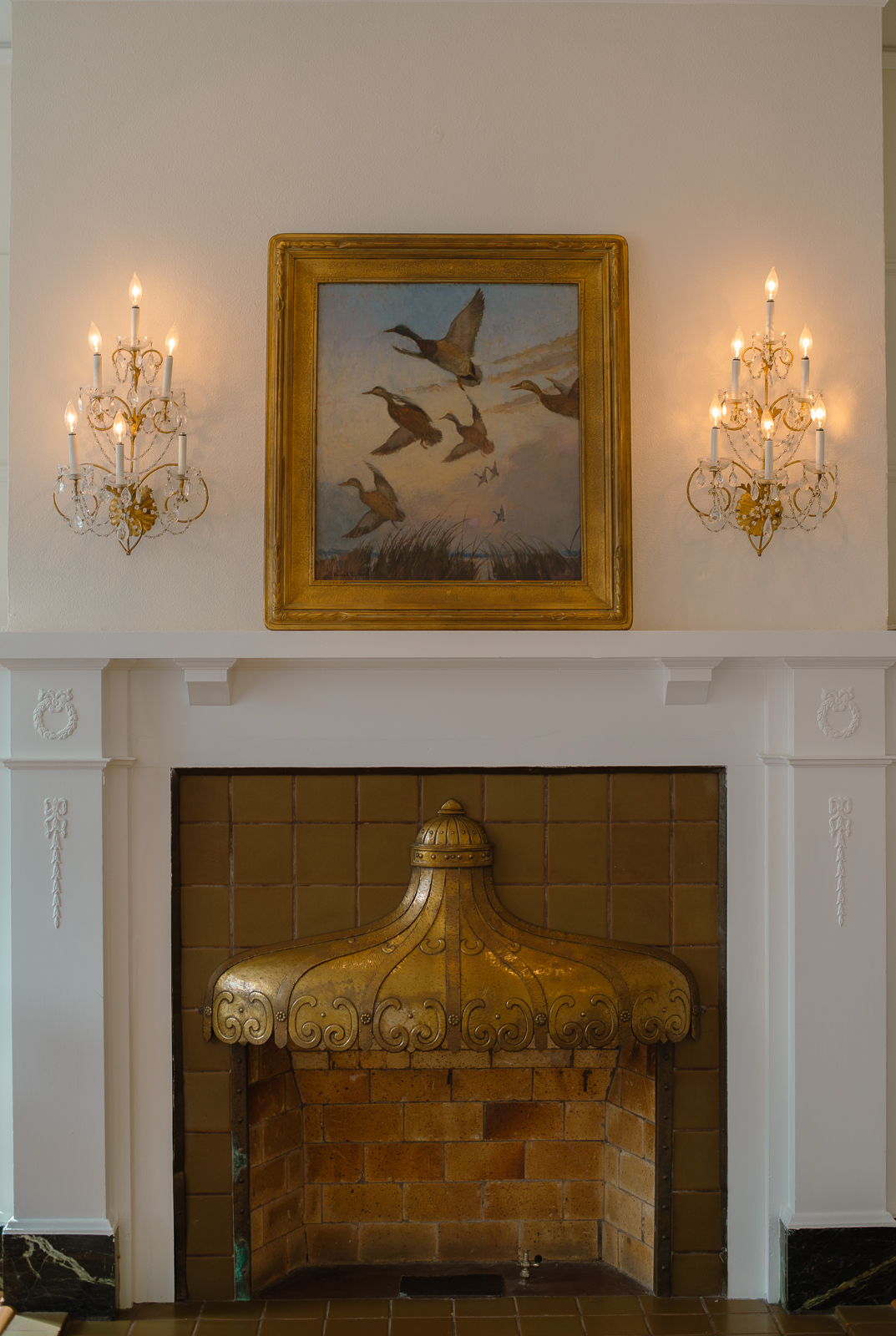Mrs. Blake was positive that the ring she wore was a real diamond, even if her daughter didn’t believe her. The two women stood near a large window in the front parlor of their home, which looked out over a young and developing Winnetka Heights neighborhood.
Mrs. Blake removed her ring, handed it to her daughter, and they both took turns using the diamond to carve their initials into the glass window pane.
The Blakes lived in their Oak Cliff home until 1917, and it changed many hands throughout the early 20th century. By the time the Oak Cliff Society of Fine Arts became owner of the property in 1957, it was in disarray.
Getting the home — which was named the Turner House in 2002 — into shape has been an arduous and ongoing process. But, according to Bart Thrasher, historic house specialist and vice president of the OCSFA executive board, many original features of the Blakes’ home still remain today.
One of those features is the crudely scratched initials that can be found on the front window.
The Turner House was built in 1912 by John Phillip Blake, one of four early developers of the Winnetka Heights neighborhood who moved to Dallas from Chicago and named the neighborhood after an affluent suburb of their hometown.
Blake made his fortune off sheet music and piano lessons, and the prairie-style home cost $55,000 to build — over $1.6 million in today’s dollars.
Donna Miller, president of the society, says the four early Winnetka Heights homes acted as show houses that advertised the developing neighborhood. The home designers implemented state-of-the-art technologies and spared no expense on the latest “novelties,” and the Blakes hosted “lavish” parties at the home to show those novelties off.
For example, the Turner House boasts one of the first steam showers that was ever put into a Dallas home. (Miller says the shower looks scary now, but was an impressive technology at the time.)
Another novelty are the windows themselves, which were built with pockets in the walls that hide the lower panes from sight when the windows are slid open.
“I’ve talked with several other architects and people, and they’ve never seen that before. It might have been something that they custom made just for this house because they were quirky,” Thrasher says.
One of the most stunning features in the home is a large, stained glass bay window that sits over the stair landing. Panels of pearly milk glass make up the majority of the window, and purple and green flowers and vines trail across the top and the sides of the window like a floral frame.
Thrasher says when a professional came to the home, she confirmed what the society had believed about the window. It had been ordered from a Tiffany’s catalog.
The professional said the colors in the wisteria flowers were “signature Tiffany.”
While parts of the frame need to be rebuilt, and some of the pieces of milk glass need to be replaced, the floral pattern is in relatively good condition.
“A miracle,” says Miller.
Another quirk of the home was its integral gutter system. At the time, homeowners did not want to see gutters on the outside of their homes, so rain spouts were routed behind the roof fascia.
“Let’s introduce rot,” says Travis-Lee Moore, a director on the society’s board.
And introduce rot it did. That integral gutter system has since been removed, and the society completely replaced the soffits and fascia boards on the home.
Preserving one of the two remaining homes from Winnetka Heights’ pioneer days is no small task, and Thrasher says much of his time on the board has been spent figuring out how to prioritize all of the projects that need to be tackled to fix up the home.
One of his first — and most urgent — projects was fixing the home’s porte-cochère (the porch-like structure on the side of the home where cars could park).
While replacing the soffits and fascias, Thrasher noticed the porte-cochère was suffering from rot and water damage, and he jumped into action after realizing the structure’s roof, which is made up of Ludowici tiles, weighed over 3,000 pounds.
“I called an emergency meeting of the board and said ‘We need to find the money to get the damn tiles off of the roof because this thing is going to collapse and possibly kill someone, and certainly will destroy all of the stuff below it and the tiles,’” Thrasher says.
The first time a roofer stepped onto the porte-cochère, his foot went straight through.
Other problems have included finding craftsmen in the modern day who are able to do work that is becoming less and less common. Window beveling, for instance, is a craft that requires a decade of apprenticeship at a time when fewer and fewer people are joining the industry.
But all these problems are worth working through to fix up “the old girl.”
“If you look around Dallas, if you look at Downtown, we’ve torn down seven Greek cities over and over again of beautiful things,” Moore says.
The society raises money for the home’s preservation through fundraising and grants, and seems to have the next decade’s worth of home improvements already planned out. On the second floor of the Turner House is the office room where the Oak Cliff Society of Fine Arts operates. And in that office is a framed oil painting of Mrs. Blake herself, looking out over her home.

